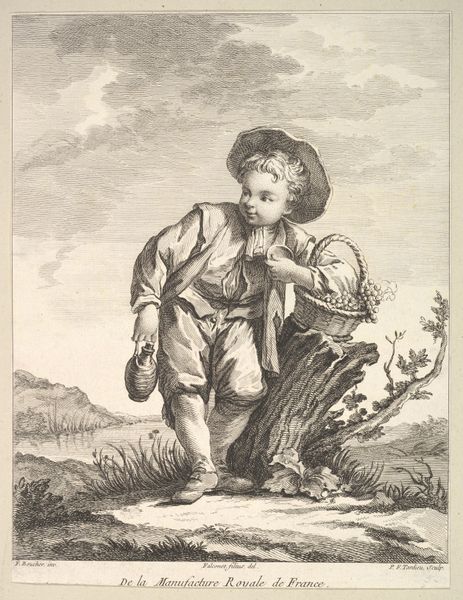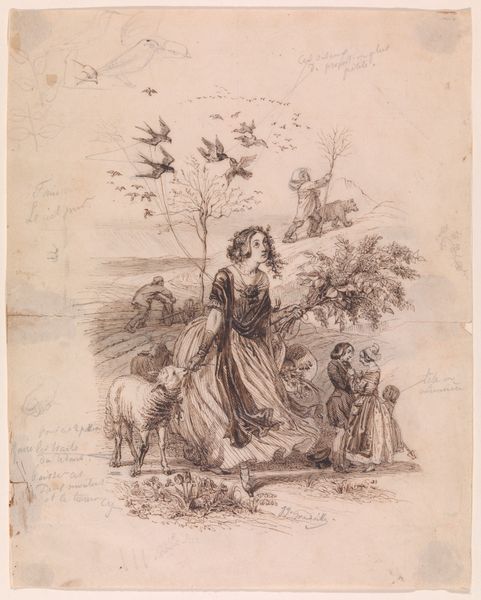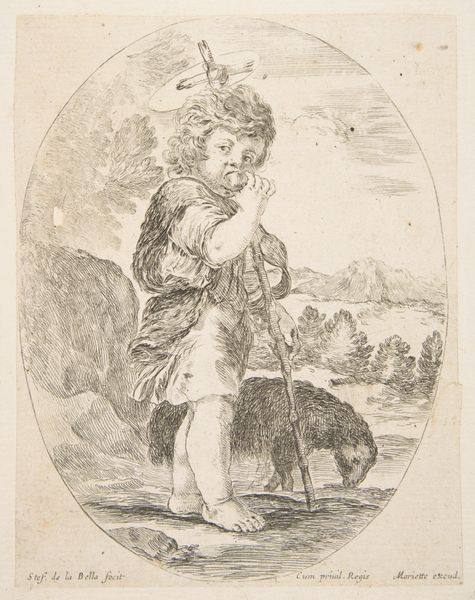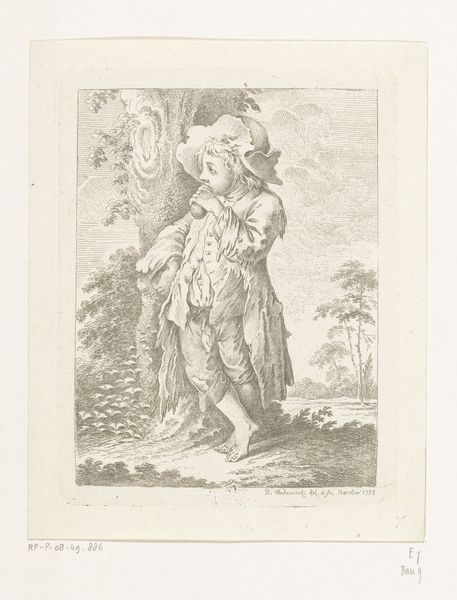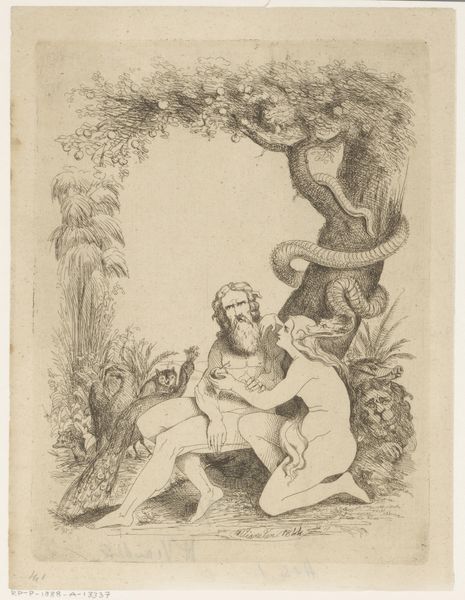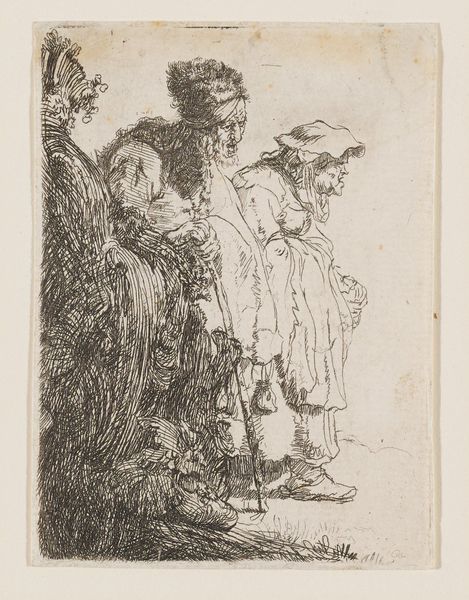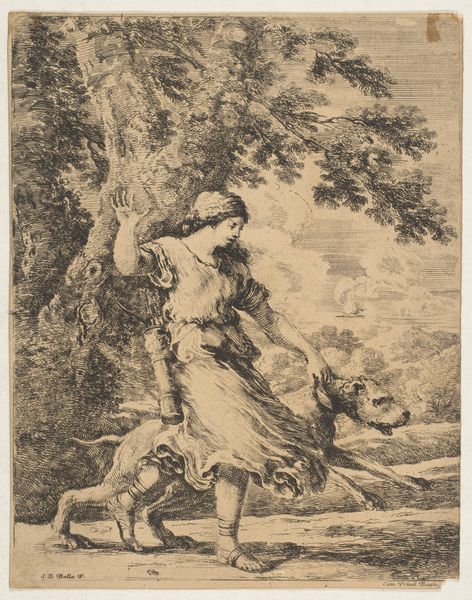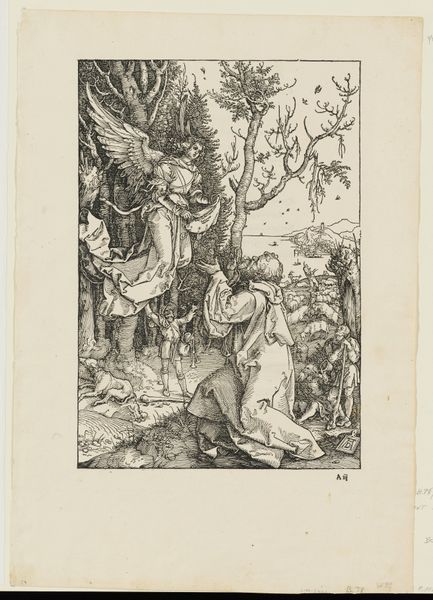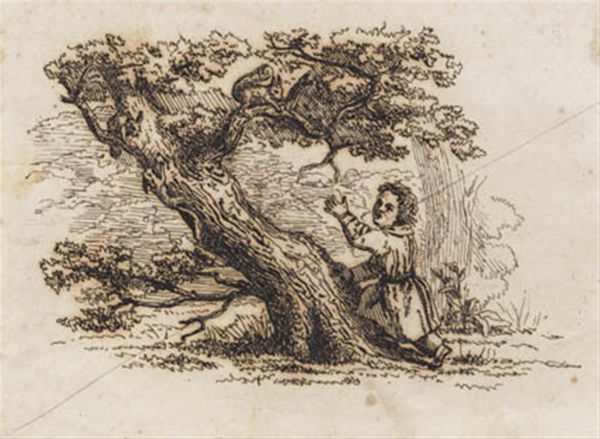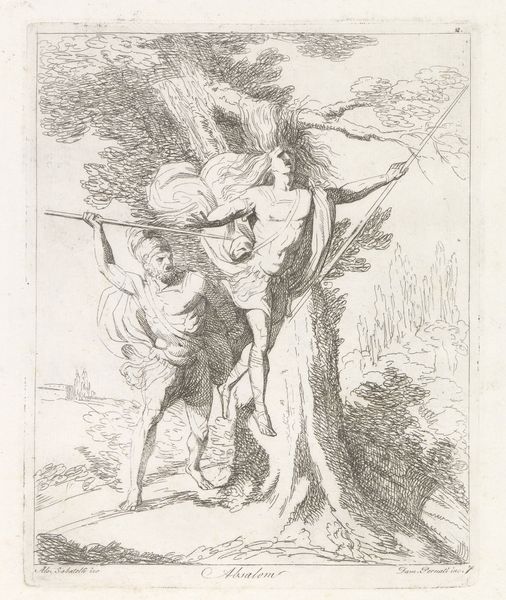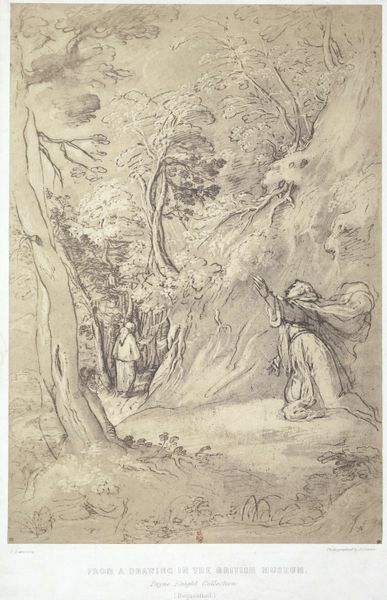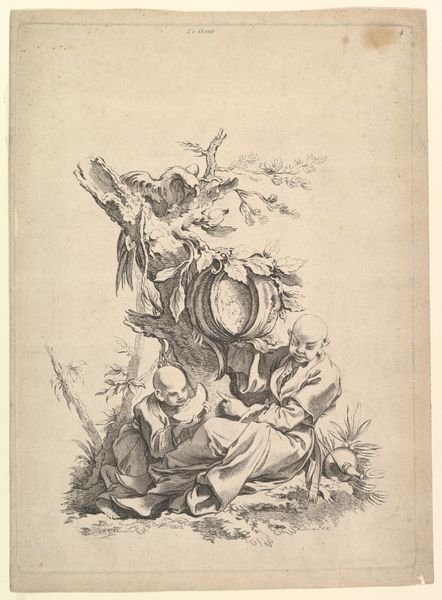
drawing, print, ink, pen
#
portrait
#
drawing
# print
#
landscape
#
figuration
#
ink
#
romanticism
#
pen
#
genre-painting
Dimensions: overall: 32.7 x 23.7 cm (12 7/8 x 9 5/16 in.)
Copyright: National Gallery of Art: CC0 1.0
Curator: This is Mather Brown's “Girl with a Pitcher,” a drawing believed to be from around 1805 to 1810. It showcases the artist's exploration into genre scenes during his time in Britain. Editor: The pen and ink create this very delicate atmosphere; almost feels like looking at a memory, fleeting and slightly blurred around the edges. The texture of the rock, in contrast to her smooth face, creates visual interest, too. Curator: It’s an interesting depiction, isn't it? It combines portraiture with a more pastoral setting, blending class expectations of the period. One wonders if this young girl’s access to such idealized landscape might be somewhat staged. Editor: I’m immediately drawn to that pitcher—the utilitarian object given almost as much detail as the girl's face. It raises questions about her labor, and her access to clean materials. The simple nature of its construction also reminds us how essential that kind of earthenware was in the period. Curator: Precisely, there's an ambivalence. Is she a romantic vision of rural simplicity, or is it hinting at the realities of working-class life subtly woven in? The composition suggests it’s less about pure representation and more about constructing an image of feminine innocence, shaped, undoubtedly, for a particular audience. Editor: Absolutely, even her clothing is revealing—she appears in somewhat well-made, albeit simple, dress that stands against the roughed surface of the stone where she leans and against which her existence, or more widely those like her, are building upon. And the church spire visible in the distance subtly suggests the social structures and their constant ever-presence as well. Curator: So, in many ways, a seeming casual drawing on closer view speaks volumes about the cultural narratives present during that period and how art like this reinforced or perhaps challenged the social constructs subtly, maybe unknowingly. Editor: Ultimately, it brings us back to considering the artwork not just for its aesthetic qualities, but also its commentary on work, class and their materiality in constructing this vision of innocence.
Comments
No comments
Be the first to comment and join the conversation on the ultimate creative platform.
